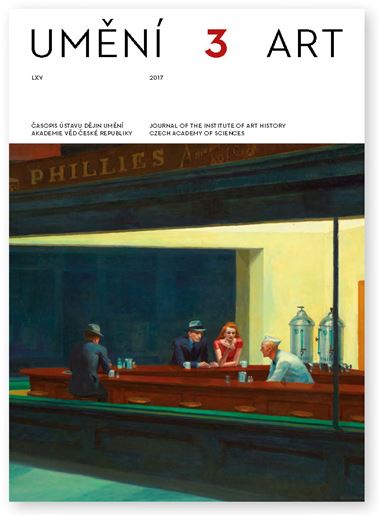Tomáš Murár
Nighthawks in The Age of Anxiety. Interpretation of the painting by Edward Hopper by means of the ‘Baroque eclogue’ of Wystan Hugh Auden
This article deals with the interpretation of the painting by American artist Edward Hopper (1882–1967), Nighthawks, from 1942, this being carried out through the poem of Wystan Hugh Auden (1907–1973) The Age of Anxiety. A Baroque Eclogue from 1947. The basic premise of the article is the similarity of the two works of art, which came into being at the same time and in the same place, which means in the first half of the 1940s in the USA. Both Hopper and Auden selected the same artistic motif, a night bar with a foursome of protagonists, who meet in the midst of war and seek an escape from the outside world of wartime chaos. The paper traces the possibilities of the interpretation of Hopper’s iconic painting through Auden’s poem and also in the context of the contemporary ideas of Alfred Schütz (1899–1959) and Jean Gebser (1905–1973), who were thinking, at the time in which Nighthawks and The Age of Anxiety came into being, about the possibilities of the pervasion of individual separate realities and about the eternally continuing present of the period of the 1930s and 1940s. The study by the interpretation of Nighthawks in The Age of Anxiety traces possible ‚cracks‘ in the tradition of American painting through the method of investigating an independent (artistic) time and space created in the researched artworks.
Full-text in the Digital Library of the Czech Academy of Sciences:
https://kramerius.lib.cas.cz/uuid/uuid:84b50e46-b6e8-48a8-a983-c39aac85af26
< back

